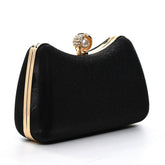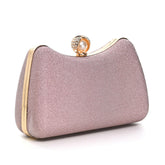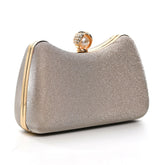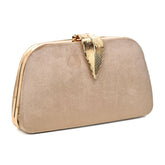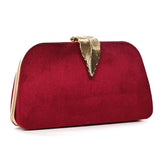Runways & Revolution: How Pakistani Fashion is Redefining Global Style
Introduction: A Stitch in Time That Changed Everything
Fashion in Pakistan is more than just an industry—it’s a cultural movement, a statement of identity, and a mirror to a society in transition. What was once limited to traditional attire and local bazaars has now transformed into a booming ecosystem of couture brands, street-style influencers, e-commerce platforms, and global recognition. From the shimmering catwalks of Lahore and Karachi to the digital screens of fashionistas worldwide, Pakistani fashion is making headlines—and it’s not slowing down.
In this article, we explore how fashion in Pakistan has evolved, the key players revolutionizing the industry, and why the world can’t take its eyes off the country’s unique blend of heritage and haute couture.
Chapter 1: From Thread to Trend – A Brief History of Pakistani Fashion
Pakistani fashion draws its strength from centuries-old traditions woven into its fabrics. With roots in Mughal opulence and regional craftsmanship, early fashion revolved around intricate embroidery, rich textiles, and handwoven artistry. The shalwar kameez, the national dress, stood as a symbol of elegance and modesty, but also as a blank canvas for endless innovation.
Post-independence in 1947, Pakistan’s fashion identity began to take shape, influenced by politics, religion, Western trends, and regional diversity. It wasn’t until the 1980s and ’90s that fashion designers like Maheen Khan, Rizwan Beyg, and Deepak Perwani began to carve out the runway culture, birthing what we now know as Pakistan Fashion Week.
Chapter 2: The Big Names – Icons Who Revolutionized Pakistani Fashion
Today, Pakistan’s fashion scene is dotted with influential designers whose names command respect both locally and abroad.
-
HSY (Hassan Sheheryar Yasin): The self-proclaimed ‘King of Couture’ has been instrumental in glamorizing Pakistani bridal fashion with his luxurious designs and flamboyant runway shows.
-
Sana Safinaz: Known for fusing traditional silhouettes with contemporary cuts, this duo transformed lawn into a fashion phenomenon.
-
Elan (Khadijah Shah): A global name, Elan is now synonymous with modern elegance, seen on red carpets from Dubai to London.
-
Kamiar Rokni: Celebrated for reviving indigenous craftsmanship, his collections often pay homage to forgotten textiles and dying art forms.
These designers haven’t just dressed celebrities—they’ve built a movement that celebrates Pakistani culture in wearable form.
Chapter 3: Lawn Wars – When Summer Became a Fashion Battlefield
In no other country does a fabric launch make national headlines—except in Pakistan. The lawn wars, as they are affectionately known, mark the annual frenzy of summer lawn collections. Each year, top designers compete with eye-popping campaigns, celebrity endorsements, and limited-edition prints that send fashion enthusiasts into a shopping spiral.
What makes this seasonal phenomenon so iconic?
-
Affordability meets prestige: Branded lawn is seen as the middle ground between luxury and accessibility.
-
Collectible culture: Many women treat designer lawn suits like prized possessions.
-
Social status: Wearing the latest designer lawn signals trend-awareness and social standing.
This rivalry has turned fashion marketing into an art form, with every collection drop resembling a blockbuster movie premiere.
Chapter 4: Fashion and the Digital Boom – Instagram, Influencers, and E-Commerce
The fashion revolution in Pakistan owes a significant chunk of its success to the internet and social media. Platforms like Instagram and TikTok have given rise to a new breed of fashion influencers, each with their own cult following.
Influencers like Mahnush, Hira Attique, Eman Suleman, and Waliya Najib are redefining beauty standards and bringing homegrown fashion to the global digital stage. Their outfit posts are shared, saved, and shopped from faster than you can say “new drop.”
Meanwhile, platforms like Daraz, Bagallery, and Zellbury are making fashion more accessible, especially in second-tier cities. Pakistani e-commerce in fashion is now worth billions and growing rapidly.
Chapter 5: Modesty Meets Modern – The Rise of Contemporary Modest Fashion
Pakistani fashion has cracked a code that many global markets still struggle with: how to be fashionable and modest at the same time.
Designers are now creating collections that celebrate long hemlines, loose silhouettes, and covered styles—without compromising on flair. This has allowed Pakistani brands to appeal to Middle Eastern markets, South Asian diasporas, and even Western consumers looking for ethical and modest options.
It’s not just a trend—it’s a movement. And it’s got staying power.
Chapter 6: Bridal Couture – Where Tradition Meets Runway Drama
If there’s one thing Pakistani fashion does better than anyone else—it’s bridal couture.
Weddings in Pakistan are grand, emotional, and style-obsessed. From mehndi to baraat to walima, each event has a designated fashion code. Designers like Faraz Manan, Nomi Ansari, and Ali Xeeshan have turned bridal wear into jaw-dropping visual spectacles.
Velvet lehengas, mirror work, gota borders, sequins, organza capes, and fusion drapes have become part of the bridal lexicon. International brides are increasingly turning to Pakistani designers for outfits that are regal, handcrafted, and unforgettable.
Chapter 7: Fashion Weeks, Red Carpets, and Global Runways
Pakistan’s fashion weeks have become cultural institutions. Events like PFDC Sunsilk Fashion Week, Bridal Couture Week, and Fashion Pakistan Week are no longer just about the clothes—they are about storytelling, creativity, and cultural pride.
Moreover, Pakistani designers have begun showcasing on international platforms—from Paris Fashion Week to Dubai Modest Fashion Week. Supermodels like Meesha Shafi, Rabia Butt, and Zara Abid (RIP) have helped put Pakistani faces on global magazine covers and billboards.
Chapter 8: Street Style and Gen-Z Rebellion
Gen-Z is bringing a whole new flavor to the fashion scene—mixing kurtis with sneakers, thrifted jeans with dupatta scarves, and oversized shirts with neon eyeliner. They’re ditching conventional labels and supporting indie brands, secondhand stores, and sustainable fashion.
Lahore’s Liberty Market, Karachi’s Zainab Market, and Islamabad’s F7 stalls are now seeing a revival—thanks to youth-led content that glorifies DIY fashion, self-expression, and conscious shopping.
Fashion is becoming more gender-fluid, inclusive, and bold—mirroring a generation that’s unafraid to be loud, proud, and different.
Chapter 9: Fashion with a Conscience – Sustainability in the Spotlight
Sustainability is becoming more than a buzzword in Pakistan. Brands like Generation, Khaadi, and SHEEP are incorporating eco-friendly practices, advocating for fair wages, and promoting slow fashion.
Upcycling, zero-waste tailoring, and organic dyes are becoming part of the conversation. While fast fashion is still dominant, the consumer mindset is shifting—especially among urban, educated shoppers who care about who made their clothes and how.
Chapter 10: Challenges Ahead – Between Glamour and Grit
Despite the glamour, Pakistani fashion faces challenges:
-
Counterfeit culture is rampant, threatening original designers.
-
Lack of regulation in textile labor and fair wages is a pressing concern.
-
Political instability and import taxes can disrupt global trade and material sourcing.
-
Cultural policing often criticizes bold fashion statements, especially by women and minority groups.
But if history is any indication, the fashion community always finds a way to adapt—and even thrive—under pressure.
Conclusion: The Fabric of a Nation in Transformation
Fashion in Pakistan is not just about style—it’s about storytelling. Every ghagra, every kurta, every hand-embroidered motif tells a story of resistance, resilience, creativity, and community.
From small-town tailors to international fashion runways, the journey of Pakistani fashion is nothing short of extraordinary. It’s redefining what it means to be traditional in a modern world—and the world is finally paying attention.
So the next time you see a swirl of color on the runway or an embroidered neckline at a wedding, remember: it’s not just fashion. It’s a cultural revolution—stitched in Pakistan.



